
A wonderful way to capture the magic of family trips is by having your children write reviews of their family adventures; so take along this vacation worksheet on your next trip. I thought of this idea while on a recent family trip to Great Wolf Lodge with my family, wondering if my children would remember how much fun we had together.

It occurred to me that by making age-appropriate trip review forms for my 5 and 8 year old, I could capture their thoughts. I plan to have them complete one for each trip and place them in a family trip review binder.
In this blog post, I'll explore the benefits of engaging kids in this activity and provide the three free vacation worksheets that parents and educators can use to inspire trip reviews. Let the joy of reminiscing and storytelling unfold!
Children possess a unique lens through which they view the world, and their perspectives on family trips are no exception. Encouraging them to share their thoughts fosters communication skills, enhances vocabulary, and boosts their self-esteem. Moreover, it's a delightful way for parents to gain insight into their child's experiences and feelings during the vacation.
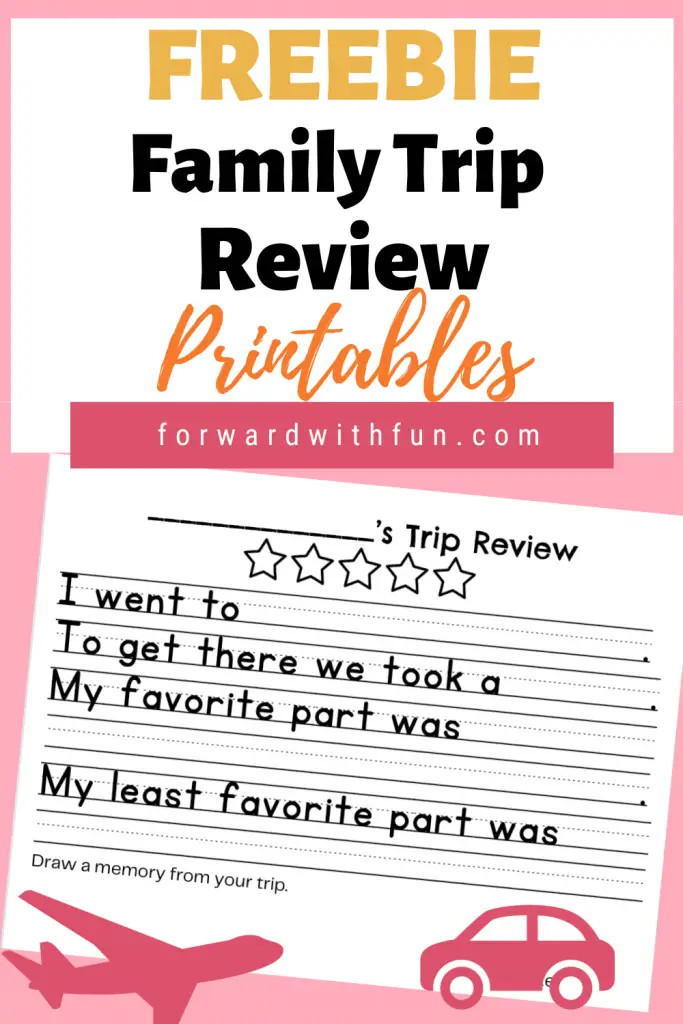
To make the review-writing process more engaging for both kids and simpler for parents/educators, I've created a 3 age appropriate versions of a free vacation worksheet that you use with your children or students. This worksheet is designed to prompt specific questions, guiding kids through their thoughts about the trip and helping them organize their ideas.
Engaging children aged 4-8 in the process of writing reviews about their family trips is not only a creative exercise but also a meaningful way to strengthen family bonds. The free vacation worksheet serves as a handy tool, making writing both enjoyable and educational for kids. Looking for more fun writing assignments for this age? Try this free one.
Let the magic of their words capture the essence of your family adventures. In 10 years when you find this binder full of trip reviews you'll be laughing and remembering the best parts of this enchanting time. They grow up so fast.
It's a no brainer to use this adorable WANTED poster for your kindergarten winter writing project.
Gingerbread decorating is a common winter theme, along with the exploration of Gingerbread related stories, so let's keep with the theme and create our own WANTED poster.
*As an Amazon affiliate, I may get a small commission for purchases made through links in this post.
The Runaway Gingerbread man is a famous story, but did you know there are many stories that have runaway gingerbread characters?
My kindergartners and I love the following stories to compare and contrast the following gingerbread stories (all perfect to inspire winter writing!):





Before writing, students will need to create their very own gingerbread people to decorate. You can use the template from the second page of the Kindergarten Winter Writing PDF to trace the gingerbread shape onto a piece of construction paper. If you have brown printer paper, you can also print it on that.
Items you'll need to decorate gingerbread people:
Kids added the following to their gingerbread:
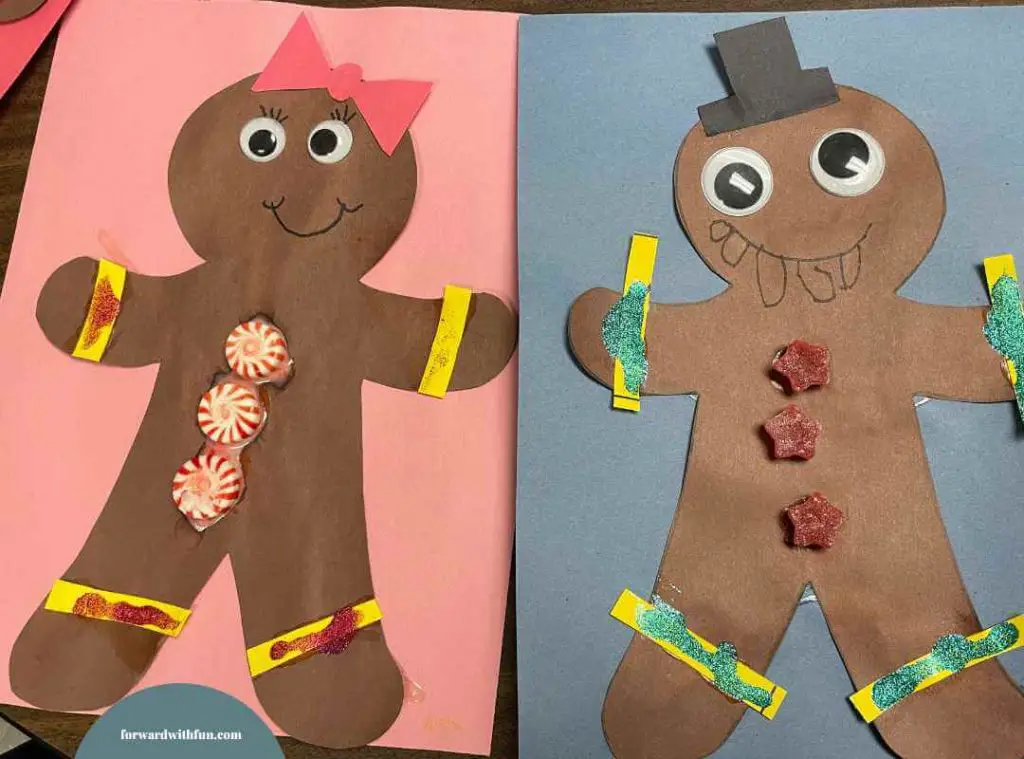
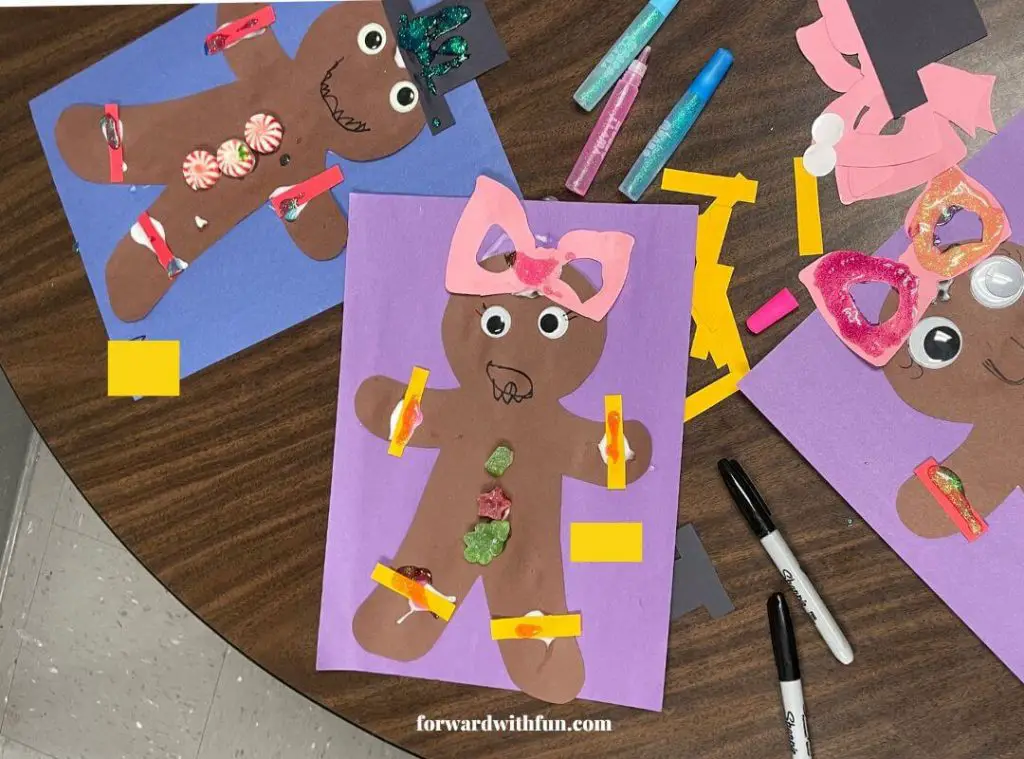
Once our gingerbread people were dry, we chose our favorite color as a background for them. Then we discussed the most important parts of the gingerbread person. (This is a great opportunity to build vocabulary especially if teaching students who are still learning English.)
A great kindergarten writing prompt is labeling. (It also lends itself nicely to learning about diagrams, an important text feature in kindergarten.)
Labeling is very accessible to kindergartners because usually it requires the writing of only one word at a time, and children can usually name parts of different pictures on their own.
I use these labeling stickers from Target because they're super cheap ($1.99), and who doesn't love stickers?
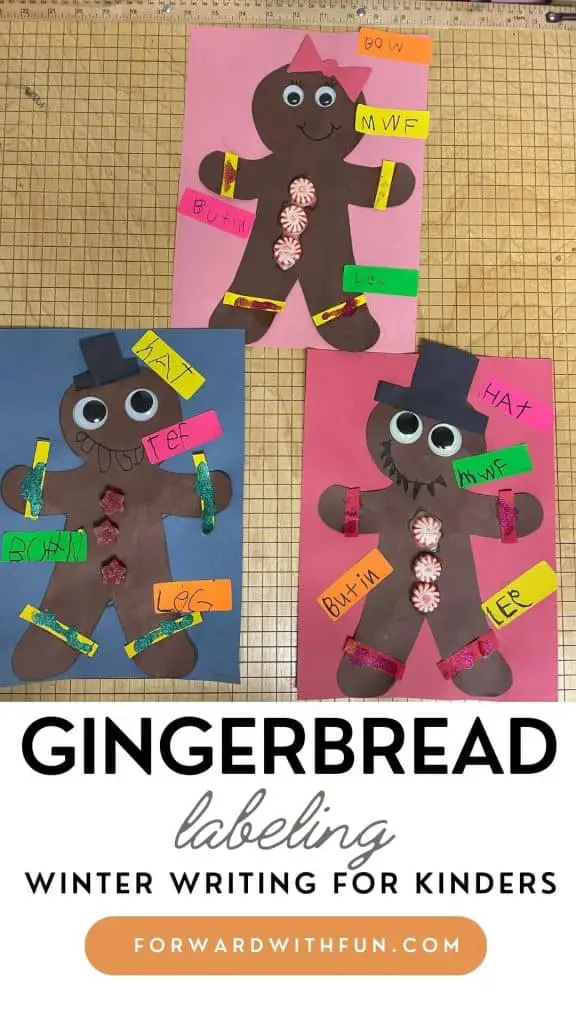
I got the idea of doing a gingerbread wanted poster after reading these stories with my class in 2013. When making connections from the story to our own lives, a student retold the story of their dog running away and how their family made signs describing the dog to put up around the town.
This project was a spin on that idea. And it really makes a great "on the wall" kind of display to put up in the classroom or home.
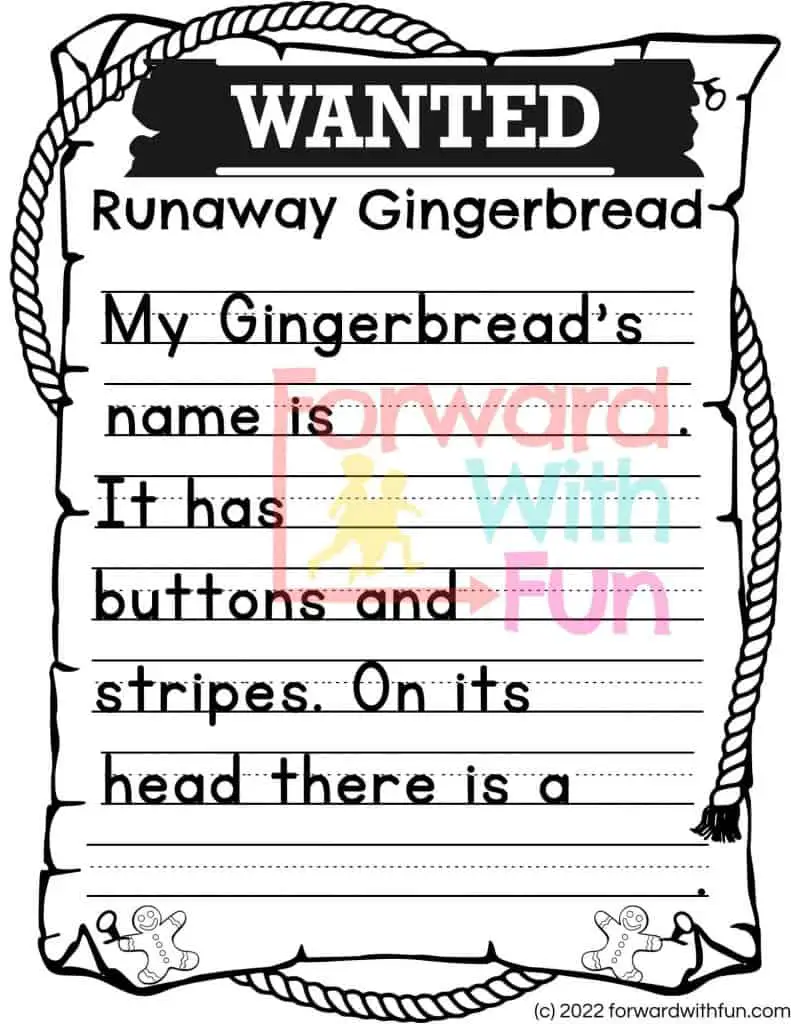
Parents, if you're reading this, you might notice that when students are writing in my class, their words are not spelled correctly. They're spelled as they sound -phonetically.
The best kind of spelling to use at this age is phonetic spelling, and if you're curious about why I don't have kids spell things the "grown up way," I would highly suggest reading this post.
Before You Download:
I do share lots of free activities because teaching is hard enough as it is. In return please consider following me on Pinterest or Instagram to see more cute activities for you to use with your kiddos.
Phonetic spelling is an essential developmental milestone for any child learning the English language. Often adults overcorrect children’s “misspellings” without understanding the role that phonetic spelling plays.
This post includes a parent letter freebie for you to share with families, in order for them to understand how vital it is for children to use phonetic spelling when they're first learning to write. See if you can easily read it, since in true teacher fashion, I wrote it all phonetically.
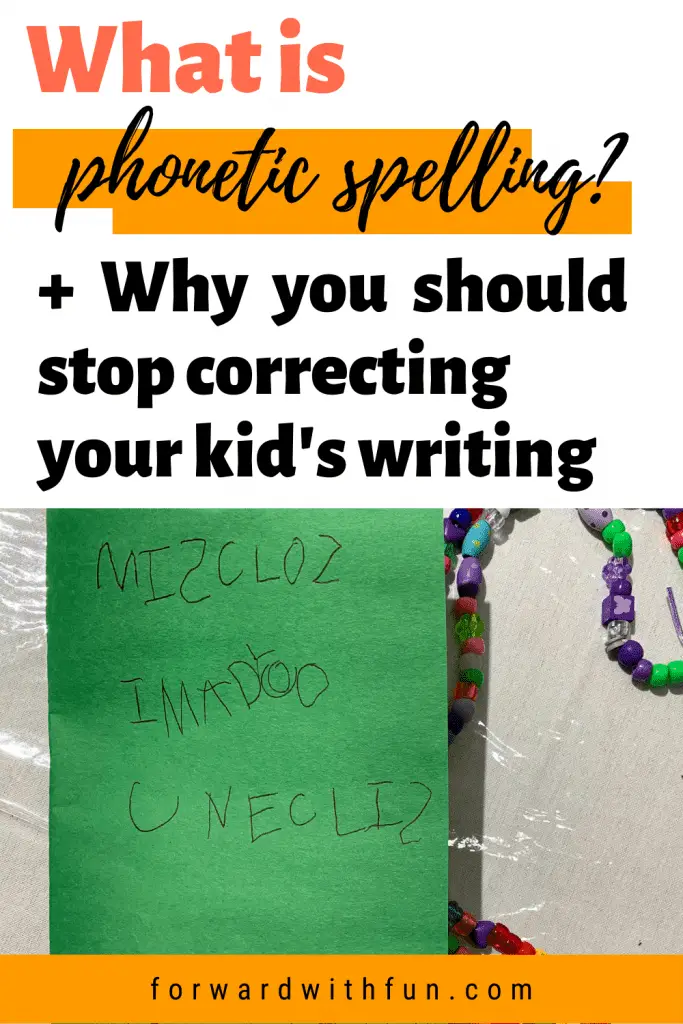
I’ve commonly called phonetic spelling, “kid spelling” in the classroom. Put in terms children understand, phonetic spelling is spelling words by sounding them out.
Sometimes phonetic spelling is referred to as inventive spelling, because children are creating spellings as they go - instead of spelling by memory.
When children are in pre-k and kindergarten, our focus is to teach them the letters and sounds of the alphabet. Each letter has a sound (or two). Children must master these sounds as the first step on their journey to becoming independent readers and writers.
Instead of classifying phonetic spelling as incorrect, I explain there are two kinds of spelling. One is adult spelling, and the other is kindergarten or kid spelling.
Guess what? Both are right. I've ruffled a few feathers on the internet by saying that, but if you keep reading, you’ll understand why.
When you see the following sentence written by a kindergartener, you’ll notice the words are all spelled incorrectly. Yet, if you read the phonetically spelled “words” out loud, you’ll be able to make sense of what was written.

"The flower is in my pocket." Well written, for a child or someone learning English for the first time! So you may have concluded by now that nope, English is not a phonetic language, unlike Spanish, German, and Polish.
The English language has many words that don’t sound as they are spelled: though, knife, far, raspberry, eight, to name a few.
Additionally, English contains many digraphs (ie. sh, ph, wh, ch). That combined with totally silent letters makes it a challenging language to learn.
Don’t even get me started about sight words like do, is, you. And then come the vowels with many different rules, like i before e, vowel teams, silent e, etc.
There are so many rules, that even I, someone who teaches phonics all day, don’t know them all!
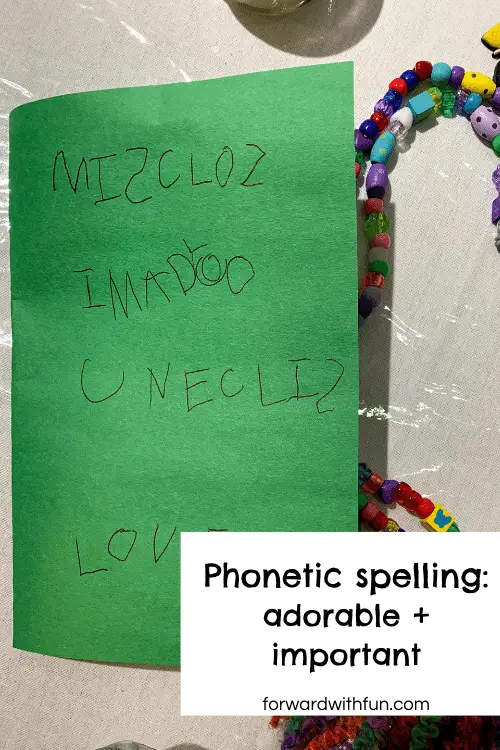
As a parent you might be thinking, “If I don’t correct this spelling, my child will learn how to spell everything incorrectly.”
I understand why people think that! But imagine this: you’re a young child who has no concept of reading and has just learned your alphabet.
After using the alphabet sounds you have been mastering over the last year (20% of your life!) you manage to sound out the word BOT (boat) only to be corrected and told it is in fact, BOAT.
What? This doesn’t make sense!
When we correct children’s spelling of words they have never been taught to spell, they may become discouraged and feel as if they’re not good at writing. After all, they learned their letters, and now the letters are not all they need!
When we encourage them to use phonetic spelling, we are reinforcing all that letter/sound knowledge. Additionally we are opening the doors for them to write without the help of an adult. This is going to create many opportunities for practice and feelings of ownership over their own writing.
I’d much rather that students spell things incorrectly and feel good about the task of writing than shut down and fear writing because they want to make sure everything is spelled like an adult.
Well, no. That doesn’t make sense either.
The spelling you should correct:
If your kid doesn’t know that a silent e makes the vowel “say it’s name,” then you wouldn’t need to tell them that they need an “e” at the end of “make.”
If your child has learned “is” and “of” as their sight words-which are memorized, then they should be spelling them correctly.
So when they learn a new spelling pattern or rule, those are now words that we can encourage them to spell with adult/standardized spelling.
For the rest of the words, encourage and praise phonetic spelling!
This way, we are reinforcing the alphabetic principle, that letters represent spoken sounds. This is also why in kindergarten, focus on teaching phonetically spelled CVC words: cup, kit, mat, bug, etc. These words make sense to children, and they’ll have more success when spelling them.
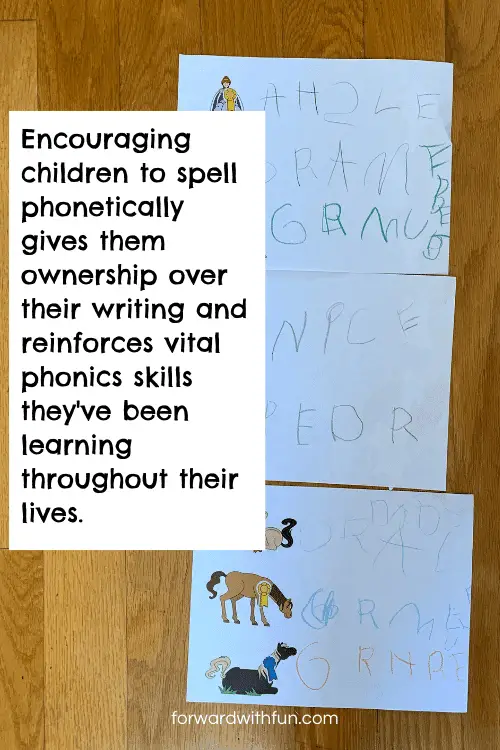
Children often ask how to spell words they want to write.
Instead of telling them what letters to write, try asking the following questions:
By encouraging children to listen for the sounds in the words, we as teachers, are building their phonemic awareness- a major reading and writing set of skills, kids will need to succeed in school.
When they ask you if their spelling is right, you can say yes. Remember, adult spelling is different from kid/kindergarten spelling. Both can be right.
At the end of kindergarten, teachers expect children to be able to write short words with at least a beginning, middle, and ending sound, but longer words take time and practice to learn the adult spelling.
Here is a letter for you to pass out to parents. You may notice, I wrote the letter using phonetic spelling.
Challenge yourself or if you're a teacher, the parents in your class, to read this letter. The letter explains what phonetic spelling is and why it’s such a developmentally important step in becoming a reader and writer.
Click the picture to download your own copy or pin it, to save for later!
Do you encourage phonetic spelling with your students?
Rainbow writing is a fun way to make spelling practice more engaging for children.
The idea of rainbows has always been a source of fascination and joy for kids, which makes it a great way to get them excited about practicing their words. They will be eager to color their word over and over again until they have formed their own rainbow!
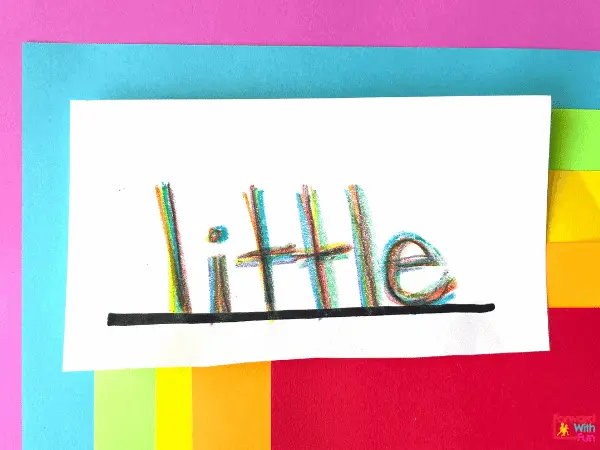
Rainbow writing is a simple, do anywhere, writing practice strategy where children either trace or write the words in rainbow colors. You can use colored pencils and crayons to create your rainbow words or try markers when doing the more independent version below.
These differentiated versions are both wonderful ways to use rainbow writing with your kids or students. And of course, it doesn't have to be just so.
You can give rainbow writing your own flair by choosing other colors, using different materials, or writing the words in different styles and shapes.
This is the simpler version of rainbow writing, since the children are not writing words on their own unlike the next version.
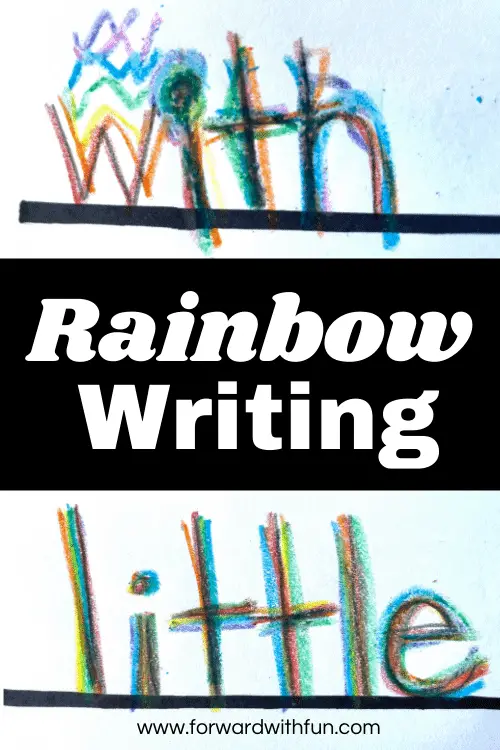
On a piece of paper, write the words you want your child to trace. Make sure to write them big enough so your child can easily trace them. The smaller the words, the more difficult they are to trace.
Next have your students or your child pick out their favorite colors to trace the word with. I know my daughter will always do things in rainbow order: ROYGBIG (red, orange, yellow, green, blue, indigo, violet) but there is no one way to rainbow write.
Have your child or students trace the word 3 or more times. For younger children, especially preschoolers, I would say 3 times is plenty of practice.
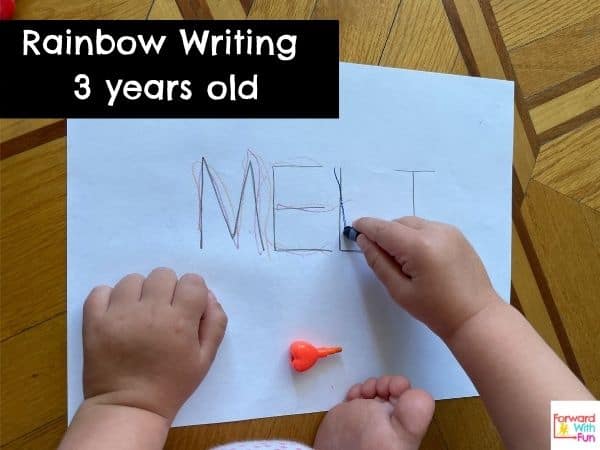
For this version, I recommend using the rainbow colors in order. Children will copy the word instead of trace it, writing it multiple times until they've created a rainbow of that word. Use markers, colored pencils, crayons, or even paint, if you're feeling it!
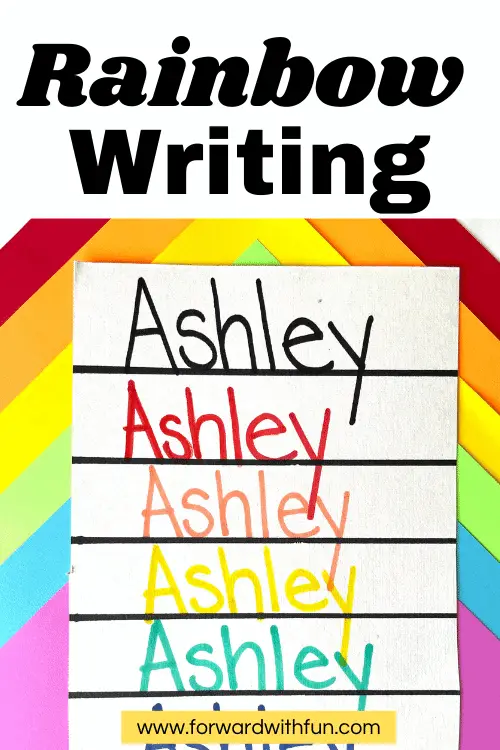
My favorite handwriting curriculum is called Learning Without Tears. They have an emphasis on learning to write in ways that are fun and developmentally appropriate.
They have a wonderful handwriting chart that shows proper letter formation, which is actually really helpful as an adult. I never knew I was doing my lowercase f's backwards.
Download the Learning Without Tears letter and number formation charts HERE! -Thanks to Learning Without Tears for making these available for FREE!
I wouldn't put too much emphasis on the exact formation if they letter looks correct when your child is writing, but when YOU write out the words, check to make sure your letters are looking like these so children learn the proper way to write!
What are your favorite resources for handwriting and spelling? Leave me a comment below!
I'm so over using worksheets for writing numbers. I've never seen a child have an "aha moment" after doing a worksheet.
As a mom and a kindergarten teacher, I love to cater to active learners who learn best with hands-on learning, aka learning by doing. With this number writing activity kids are practicing writing numbers while also searching, imagining, discovering, and playing.
*As an Amazon affiliate, I may get a small commission for purchases made through links in this post.

Writing Numbers Excavation Set Up
To start, ask your child what they know about excavation. When have they seen it, and what kinds of jobs do it. We came up with paleontologists and archaeologists.

Writing Numbers Activity
Excavating means to remove dirt carefully to find what's buried underneath. Both paleontologists and archaeologists use special tools to carefully remove the dirt in order not to harm the buried items: dinosaur bones or human artifacts!
Invite your child to play archaeologist using their paintbrush to gently brush away the sensory beads, beans, kernels, etc. to uncover the mysterious numbers beneath.
Adding the element of imaginative play always brings up the engagement level of an activity. Bonus: being an archaeologist who gently brushes the sensory items back and forth is my way of getting my kids to keep the sensory items on the actual tray and avoid the mess.
A good archaeologist always keeps track of their findings by writing them down. As your child uncovers each number, their job is to write the number on their blank paper.
Just like that writing numbers becomes a game, a mystery, and imaginative play.
You can toss that number writing worksheet now!
If writing is not your child's preferred task, it can be a battle to get them to write, even if they love reading and know their letters. This could be a sign that writing is difficult for them due to poor fine motor skills.
If your child's handwriting with a pencil is shaky, weak, or very very light, it means they need to work on their fine motor skills!
Fine motor muscles are the small muscles in the hands and wrists that little ones need to develop before being able to pick up a pencil. Pencils aren't even the best writing utensil to start with!
To develop proper pencil form, give your child small broken crayon pieces. They'll need to push down (just like with pencils) to be able to write and since the pieces are broken, it'll force their small hands to hold the crayon with a better grasp.
For more ways to build your child's fine motor skills which will make writing numbers (and writing altogether) check out my 9 favorite activities for fine motor development!
